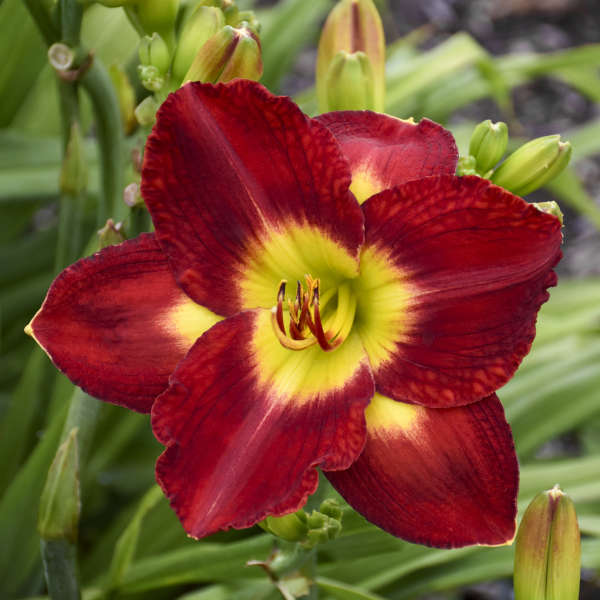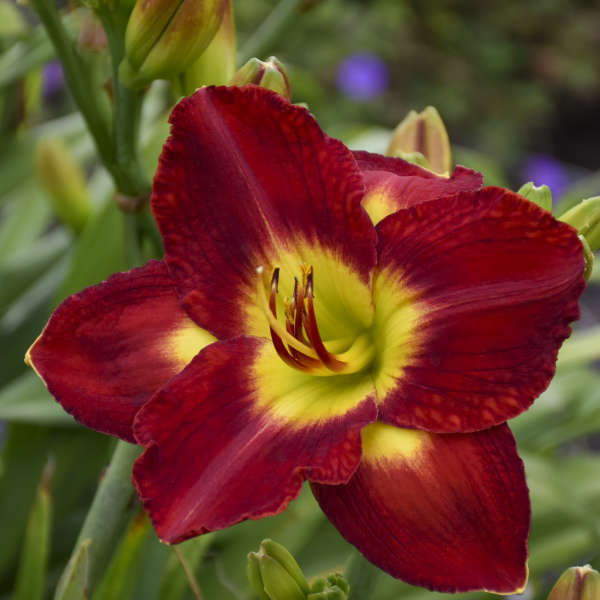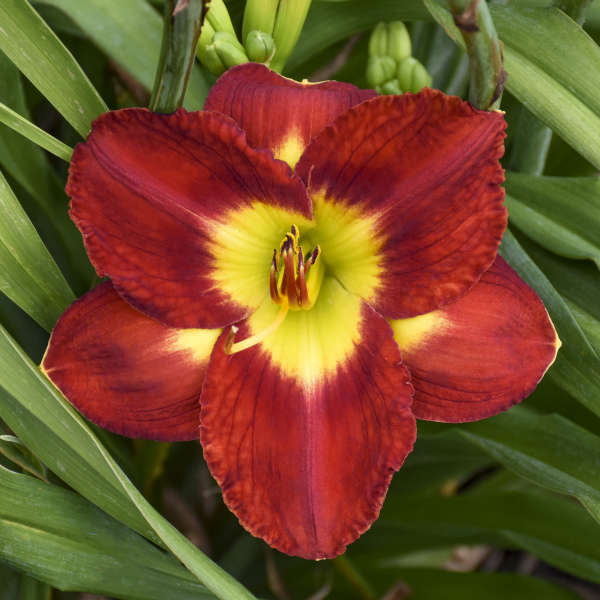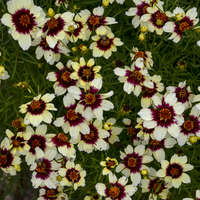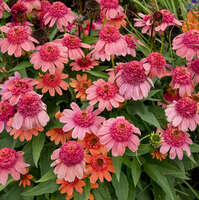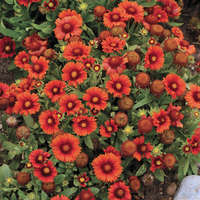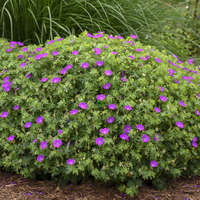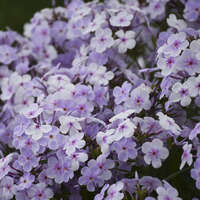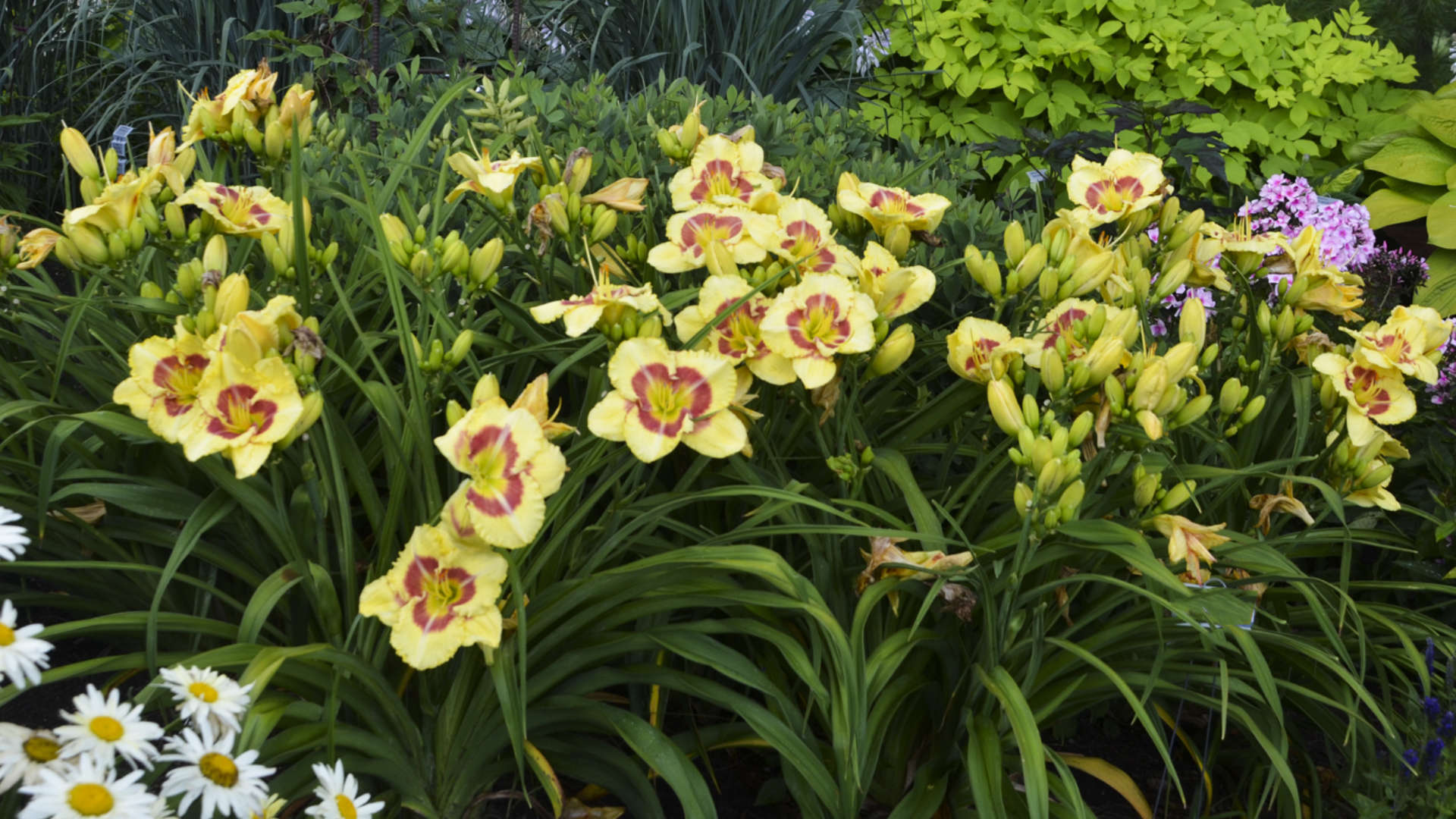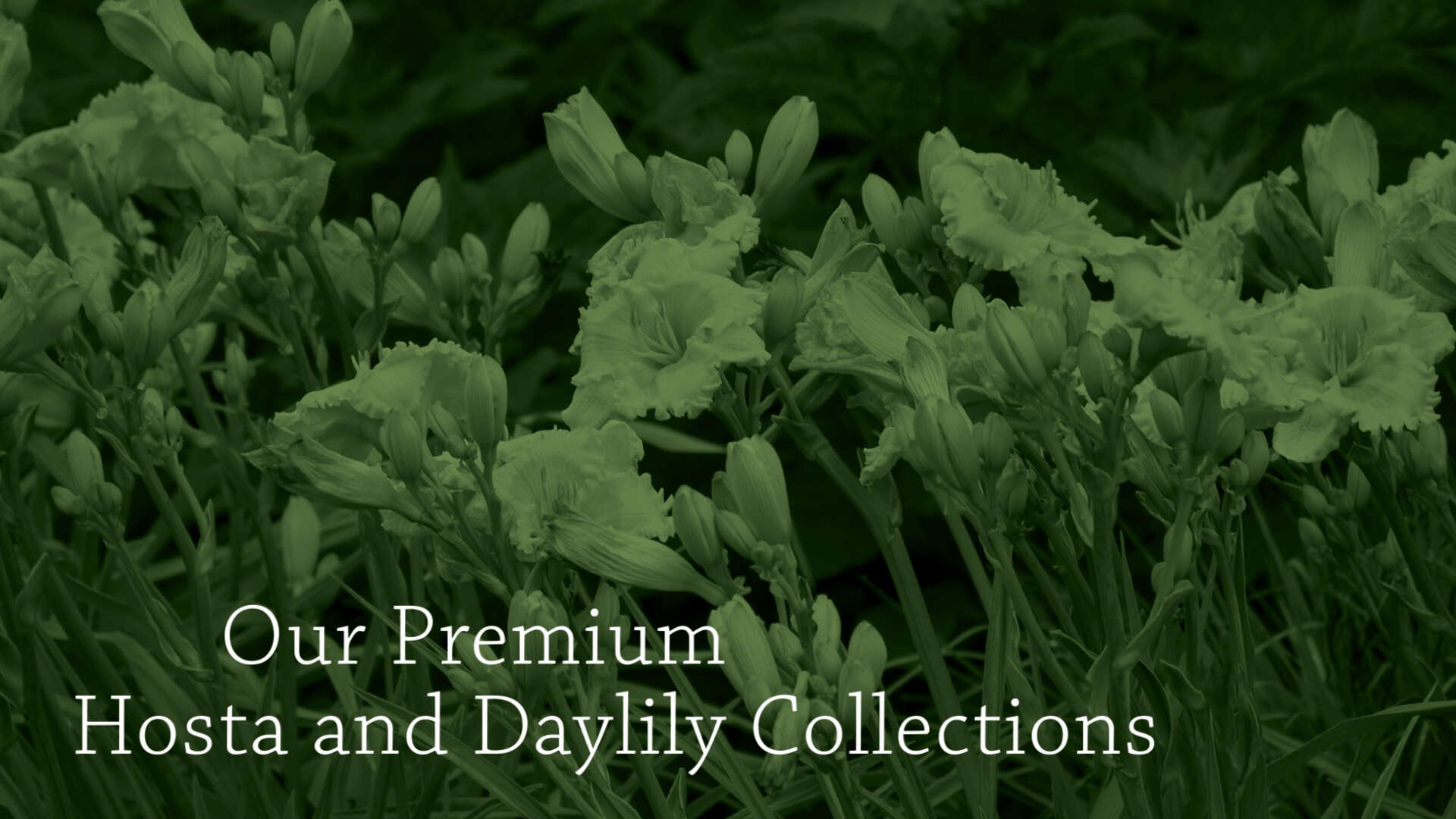Hemerocallis 'Passion for Red'

Common Name: Daylily
Representing a breeding advancement in red daylilies, this daylily produces very sunfast, extremely vibrant red flowers with a contrasting yellow eye/throat zone that is visible on all 6 tepals. For designers who are particular about their shades of red, this is more of an orange-red than a blue-red.
Very large 6¾", fragrant blossoms put on a terrific show in early midseason with some rebloom later in the summer. Thick, 3-4 way branched scapes carry buds which open over time rather than all at once, extending the bloom time and showing off each fabulous flower to its fullest potential. ‘Passion for Red’ is considered by some to be one of the very best red daylilies available today.
Daylilies can survive many harsh conditions that other plants cannot including: polluted city environments, slopes, poor and dry soils, near pavement that is salted in winter, and under Black Walnut trees (not affected by juglone).
Characteristics (Compared to Other Daylilies)
- Early Midseason Bloomer, blooming in early July.
- Rebloomer, producing a second set of flowers.
- Fragrant flowers.
- Semi-Evergreen foliage.
- Tetraploid with 44 chromosomes, twice as many as Diploids. Tetraploids tend to be bigger, stronger plants.
Premium Daylilies
This is considered a premium daylily, which means that it has been selected as highly performing plant with exceptional bloom performance, substantive, vibrantly colored flowers, complete winter hardiness in northern zones, and a vigorous habit. Out of the hundreds of varieties we have evaluated for our catalog, we consider this to be one of the 20 best we have available.
Grade #1 Bare Root |
Grade #2 Bare Root |
